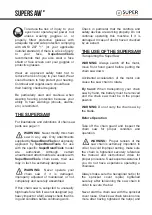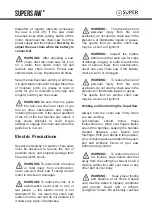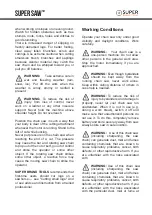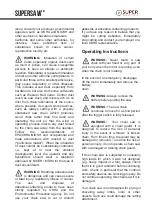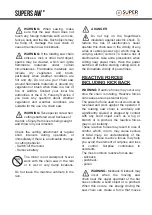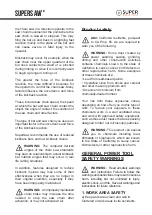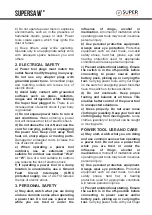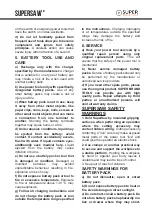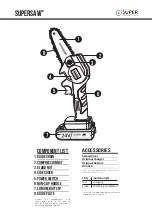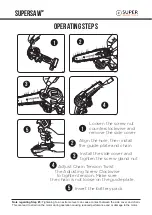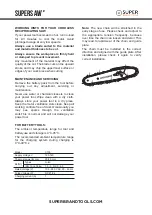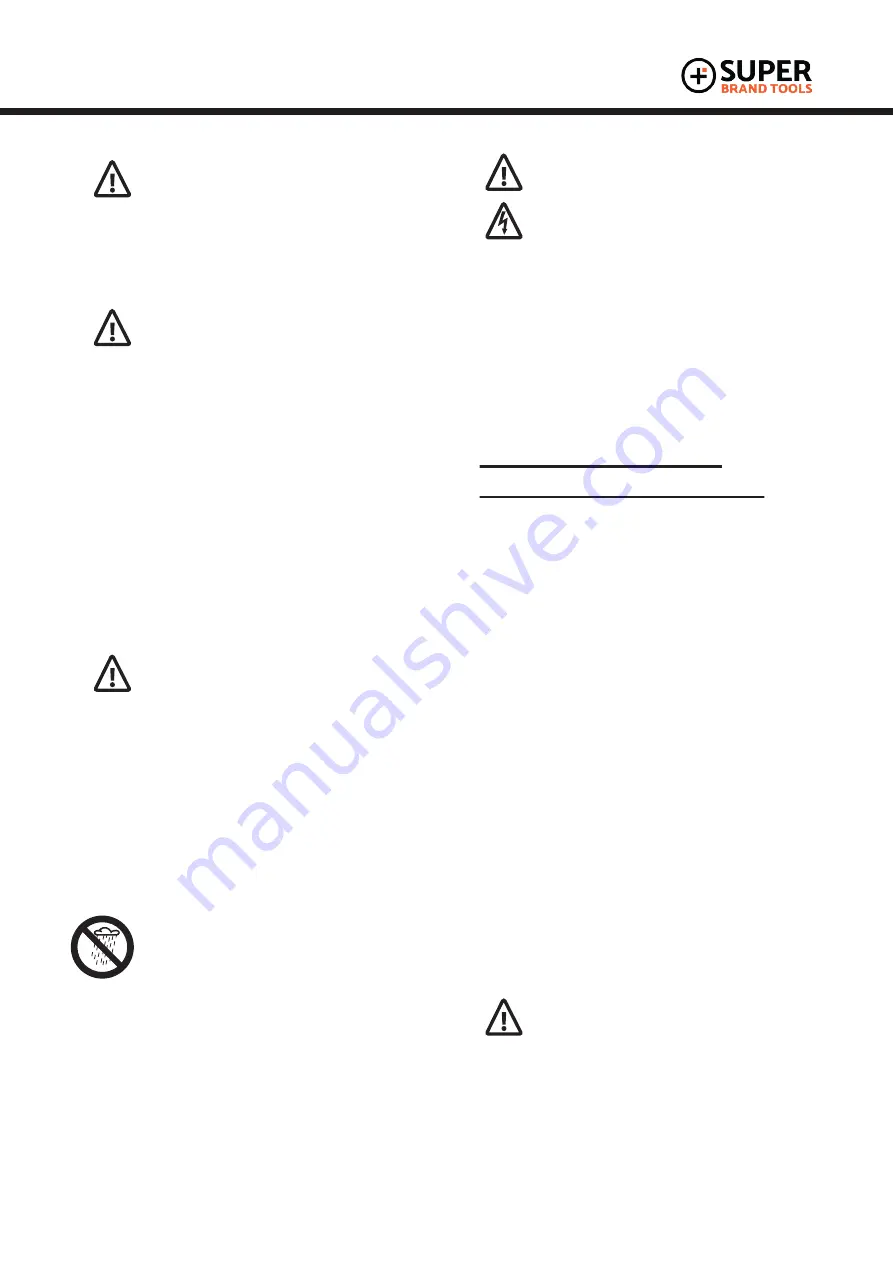
WARNING:
When sawing, make
sure that the saw chain does not
touch any foreign materials such as rocks,
fences, nails and the like. Such objects may
be flung off, damage the saw chain or
cause the chain saw to kickback.
WARNING:
If the rotating saw chain
strikes a rock or other hard object,
sparks may be created, which can ignite
flammable materials under certain
circumstances. Flammable materials can
include dry vegetation and brush,
particularly when weather conditions are
hot and dry. Do not use your chain saw
around flammable materials or around dry
vegetation or brush when there is a risk of
fire or wildfire. Contact your local fire
authorities or the U.S. Forestry Service if
you have any question about whether
vegetation and weather conditions are
suitable for the use of a chain saw.
WARNING:
Take special care when
cutting shattered wood because of
the risk of injury from slivers being caught
and thrown in your direction.
Check the cutting attachment at regular
short intervals during operation, or
immediately if there is a noticeable change
in cutting behavior:
- Switch off the motor.
- Remove battery
The motor is not waterproof. Never
work with the chain saw in the rain
or in wet or very damp locations.
Do not leave the machine outdoors in the
rain.
SUPERSAW
TM
A DANGER
Do not rely on the SuperSaw’s
insulation against electric shock. To
reduce the risk of electrocution, never
operate this chain saw in the vicinity of any
wires or cables (power, etc.) which may be
carrying electric current. To reduce risk of
electrocution, take extra precautions when
cutting near power lines. Have the power
switched off before starting cutting work in
the immediate vicinity of power lines.
REACTIVE FORCES
INCLUDING KICKBACK
WARNING:
Reactive forces may occur any
time the chain is rotating. Reactive forces
can cause serious personal injury.
The powerful force used to cut wood can be
reversed and work against the operator. If
the rotating saw chain is suddenly and
significantly slowed or stopped by contact
with any solid object such as a log or
branch or is pinched, the reactive forces
may occur instantly.
These reactive forces may result in loss of
control, which, in turn, may cause serious
or fatal injury. An understanding of the
causes of these reactive forces may help
you avoid the element of surprise and loss
of control. Surprise contributes to
accidents.
The most common reactive forces are:
- kickback,
- pushback,
- pull-in.
WARNING:
Kickback: Kickback may
occur when the moving saw
chain near the upper quadrant of the bar
nose contacts a solid object or is pinched.
When this occurs, the energy driving the
saw chain can create a force that moves


